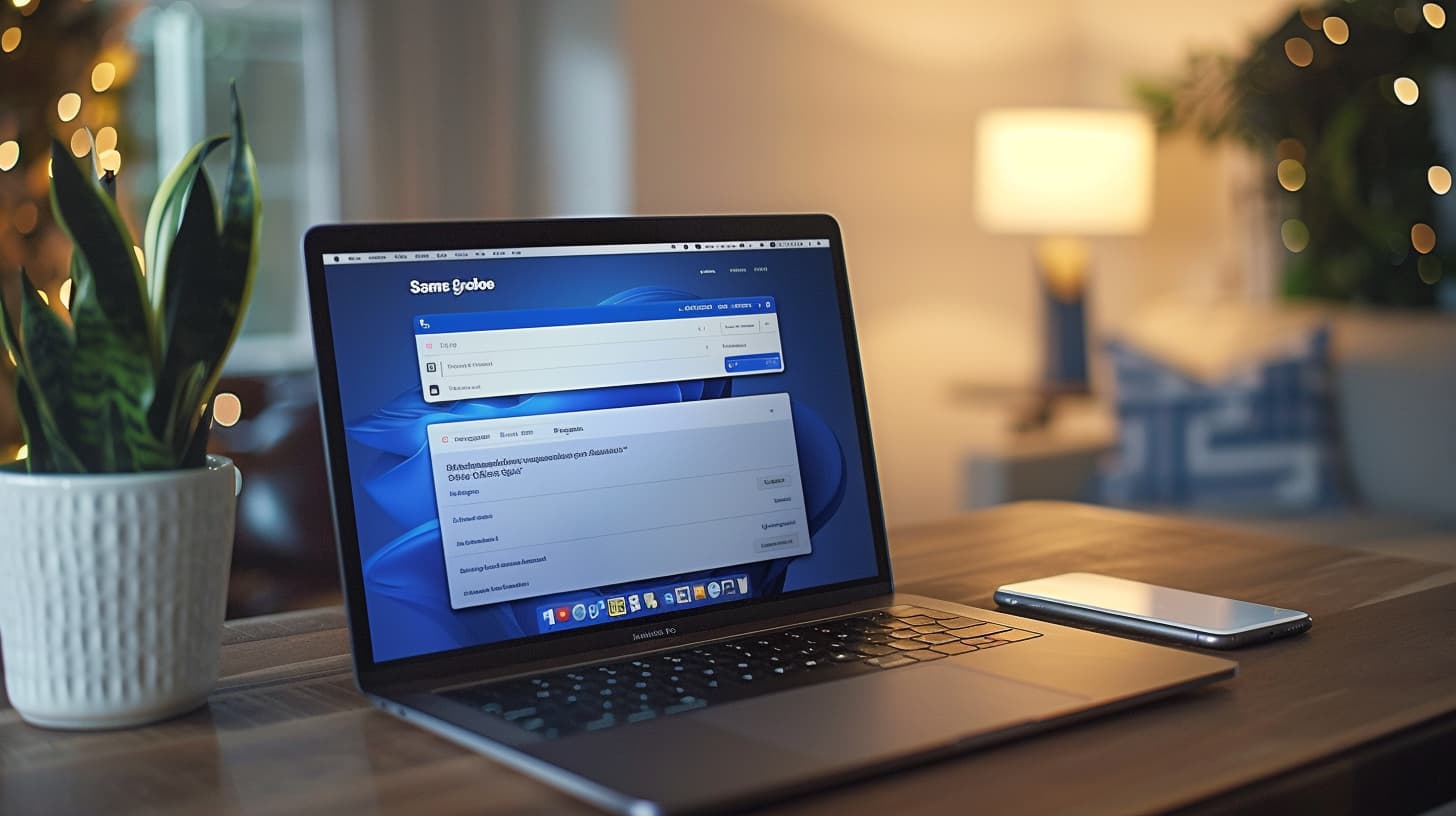Navigating the digital finance landscape can be daunting, especially when it comes to managing credit cards. As such, having a clear understanding of credit card login portals is critical. It’s essential to grasp how these portals function from user interfaces to security measures for both your personal information and your financial health.
Our exploration centers around key parameters like user ID, password, two-factor authentication, and more. In a world increasingly reliant on mobile technology, we will also delve into accessing credit card information through mobile applications, comparing desktop and mobile login processes, along with the convenience and security features offered on mobile platforms.
Understanding Credit Card Login Portals
Understanding Credit Card Login Portals
A credit card login portal is a digital platform where cardholders can manage their credit card information, transactions, payments, and overall profile. It secures your finances by facilitating encrypted communication between your device and the credit card company’s system. The interface usually includes input fields for user ID and password, a ‘login’ or ‘submit’ button, and options for additional security features or account management.
User ID and Password
The primary access credentials for a portal are the user ID and password, set up when you open your online account. The user ID can be your email address, customer ID, or a unique username you choose. It serves as your identification on the portal. The password provides an added layer of security and should be kept confidential.
If you forget your user ID or password, most portals have a ‘Forgot User ID/Password’ link. After verifying your identity through security questions or your registered email/mobile number, you’ll be directed to reset your user ID/password.
Two-Factor Authentication Methods
To enhance security, portals often feature two-factor authentication (2FA). With 2FA, you’ll confirm your identity through two separate parameters: typically, something you know (e.g., your password), and something you have (e.g., your phone).
There are several common methods for the second factor:
- A text message with a one-time code sent to your registered mobile number.
- An email with a one-time code sent to your registered email address.
- A notification or a generated code in a mobile app connected to your account.
- A call to your registered number where a bot reads out the code.
When logging in with 2FA, you’ll enter your user ID and password first. Then, you’ll get a prompt to complete the second authentication step.
Additional Functionalities in Login Portals
After logging in, you’ll typically find several options to manage your account. You can check your current balance, view previous transactions, make payments, determine cash advance limits, and more. You can often also set payment reminders, enroll for paperless statements, and update your contact information from the portal.
Each feature is commonly represented by intuitive icons or labels, ensuring that even those who are not tech-savvy can manage their accounts with ease.
Remember, while these portals provide convenience, they also demand security vigilance from users. You should ensure your login credentials are stored safely, 2FA is enabled if available, and your system is guarded against viruses and malware.

Online Security Measures for Credit Card Login
Understanding Secure Connections
A secure internet connection is essential while logging in, especially with sensitive information like your credit card details. Secured websites ensure the data you provide is encrypted and safe from potential hackers. Secure websites begin with ‘https’ in their URL, accompanied by a padlock symbol. It’s always advisable to refrain from using public Wi-Fi networks while logging into your credit card account online, as these networks can be vulnerable to cyber-attacks.
Antivirus Software and Firewalls
Install reliable antivirus software and ensure it’s regularly updated. This software can identify and eliminate potential threats which could compromise your credit card login information. In addition to antivirus software, a firewall provides an added layer of protection by blocking unauthorized access to your device.
Recognize and Prevent Phishing Scams
Phishing scams attempt to trick you into providing sensitive information, like your credit card login details, by pretending to be a trusted source, often through emails or text messages. Be wary of any email or messages that require you to provide personal or financial information, especially if they create a sense of urgency. Legitimate institutions will never ask for sensitive information through email or text.
Smart Password Practices
Use strong, unique passwords for your online credit card login. Include a mix of uppercase and lowercase letters, numbers, and special characters. Avoid using easily identifiable information like your name, birthday, or common phrases. Additionally, change your password periodically and do not use the same password across multiple online accounts.
Enable Two-Factor Authentication
Two-factor authentication (2FA) is an additional layer of security that involves a second step following your login, such as inputting a unique code sent to your phone or using a fingerprint. Utilizing 2FA can make it much harder for anyone other than you to access your credit card information online.
Regularly Monitor Your Account
Frequently reviewing your credit card accounts can help you spot any fraudulent activity early. Being aware of your account status and transactions can save you from potential financial losses due to theft.
Assure Your Device Is Secure
Make sure the device you’re using to log into your credit card account is protected. This includes having the latest operating system, browser, and app updates. These updates often include important security patches that help protect your device from new threats.

Troubleshooting Credit Card Login Issues
Troubleshooting Credit Card Login Issues
Understanding how to approach common challenges such as password resets, account unblocking, and when to contact customer service is key to a smooth credit card login process.
Understanding Password Resets
If you are having trouble logging into your credit card account, forgetting your password is usually one of the first issues that come to mind. Most credit card issuer websites have a ‘forgot password’ link on their login page. Clicking on this link will take you through the password recovery process. This may involve entering your email address or username so the system can verify your identity. Once verified, you should receive a password reset email or text message which will guide you through setting a new password. Remember to create a strong password that includes numbers, symbols, and both upper and lower case letters to enhance security.
Unlocking Your Credit Card Account
Another common issue is having your account locked due to multiple unsuccessful login attempts. This is usually a security measure to prevent unauthorized access. To unlock your account, you may need to verify your identity by answering security questions or through a code sent to your phone or email. If this process does not unlock your account, you might need to contact customer service for further assistance.
When to Contact Customer Service
If after trying the password reset process and/or the account unblocking process your login issues persist, contacting customer service should be your next step. You can find the customer service number at the back of your physical credit card or on the credit issuer’s website. Provide them with the details of your issue and remember to have your card or account information handy to facilitate verification.
Enable Browser’s Auto-fill
Filling in your username and password details every time can be cumbersome and might result in errors that prevent you from logging in successfully. Enabling your browser’s auto-fill feature can populate these fields automatically, saving you time and reducing the likelihood of errors. However, use this feature carefully and ensure your computer is secure as it may pose a security risk if your machine is accessed by unauthorized individuals.
Maintaining Your Login Information
Regularly update your login details and keep your email address up to date to ensure you can easily recover your password when necessary. It’s also a good idea to clear your browser’s cache and cookies regularly to avoid login issues related to your browser’s memory.
Remember, security is crucial when dealing with your credit card account, always ensure that you’re using a secure and private internet connection to protect your sensitive information.

Mobile Login for Credit Cards
Getting Started: Mobile Credit Card Login
The first step towards accessing your credit card information via mobile applications entail downloading the appropriate app. If you don’t have it already, visit your smartphone’s app store (Google Play for Android, App Store for iOS) and search for your bank or credit card issuer’s name. Install and open the application after confirming it’s legit.
Sign-In Information: What You’ll Need
It’s essential you already have your online banking credentials ready because you’ll need your user ID (or username) and password to login. If you haven’t set up online banking yet, visit your credit card issuer’s website on a desktop or laptop and register first because most mobile apps don’t offer the option to register as a new user.
Logging In: Step-by-Step Instructions
Open the installed app on your mobile device. In general, there are typically two spaces on the login screen – one for your username or User ID, and one for your password. Enter the required details and proceed by clicking sign in, log in, or similar options depending on the app.
Two-Factor Authentication: Extra Security Features
For added security, many credit card issuers have two-factor authentication (2FA) or multi-factor authentication (MFA) for their mobile applications as an extra layer of protection. This means even after entering your username and password successfully, you may be asked to verify your identity by entering a code sent to your email or phone number. This is an important feature to provide an extra level of security when using mobile banking apps.
Saving Login Information: Remember Me Feature
Some mobile banking apps offer the ‘Remember Me’ feature that saves your user ID or username on your device. If you’re using a private device, you can navigate the log in process a bit faster by exploiting this functionality. However, for privacy and security, consider not using this feature if you are using a shared or public device.
The Difference: Mobile vs. Desktop Login
The principal difference between the desktop and mobile login processes is the device being used. Both processes require the same information for access: a username and password. The key advantages of mobile logins include convenience, access from any geographical location, and added security features like biometric logins (Fingerprint and Face ID).
By understanding these steps, you can efficiently manage your credit card transactions, monitor your spending, and get real-time updates straight from your mobile device.

Through understanding the subtle intricacies and safety protocols of credit card login portals, we not only maintain control over our financial accounts but also secure our sensitive data from potential threats. Grappling with the challenges that may arise during the login process, hasn’t been a walk in the park; however, equipped with knowledge on how to effectively troubleshoot login issues, we cement our self-reliance in managing our finances online.
As technology continues to evolve, so too will the options for accessing our financial data. Adapting to these changes, such as the growing prevalence of mobile applications, is an essential aspect of modern financial literacy.




